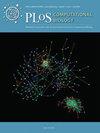Oscillations in an artificial neural network convert competing inputs into a temporal code
IF 3.8
2区 生物学
Q1 BIOCHEMICAL RESEARCH METHODS
引用次数: 0
Abstract
The field of computer vision has long drawn inspiration from neuroscientific studies of the human and non-human primate visual system. The development of convolutional neural networks (CNNs), for example, was informed by the properties of simple and complex cells in early visual cortex. However, the computational relevance of oscillatory dynamics experimentally observed in the visual system are typically not considered in artificial neural networks (ANNs). Computational models of neocortical dynamics, on the other hand, rarely take inspiration from computer vision. Here, we combine methods from computational neuroscience and machine learning to implement multiplexing in a simple ANN using oscillatory dynamics. We first trained the network to classify individually presented letters. Post-training, we added temporal dynamics to the hidden layer, introducing refraction in the hidden units as well as pulsed inhibition mimicking neuronal alpha oscillations. Without these dynamics, the trained network correctly classified individual letters but produced a mixed output when presented with two letters simultaneously, indicating a bottleneck problem. When introducing refraction and oscillatory inhibition, the output nodes corresponding to the two stimuli activate sequentially, ordered along the phase of the inhibitory oscillations. Our model implements the idea that inhibitory oscillations segregate competing inputs in time. The results of our simulations pave the way for applications in deeper network architectures and more complicated machine learning problems.人工神经网络中的振荡将竞争输入转化为时间代码
长期以来,计算机视觉领域一直从人类和非人灵长类视觉系统的神经科学研究中汲取灵感。例如,卷积神经网络(CNN)的开发就借鉴了早期视觉皮层中简单和复杂细胞的特性。然而,人工神经网络(ANN)通常不会考虑在视觉系统中实验观察到的振荡动态的计算相关性。另一方面,新皮质动力学的计算模型很少从计算机视觉中获得灵感。在这里,我们结合了计算神经科学和机器学习的方法,利用振荡动力学在简单的人工神经网络中实现了多路复用。我们首先训练网络对单独呈现的字母进行分类。训练结束后,我们在隐藏层中添加了时间动态,在隐藏单元中引入折射以及模仿神经元阿尔法振荡的脉冲抑制。在没有这些动态效果的情况下,训练后的网络能正确地对单个字母进行分类,但当同时出现两个字母时,则会产生混合输出,这表明存在瓶颈问题。当引入折射和振荡抑制时,与两个刺激相对应的输出节点会按照抑制振荡的相位顺序依次激活。我们的模型实现了抑制性振荡在时间上隔离竞争输入的想法。我们的模拟结果为应用于更深的网络架构和更复杂的机器学习问题铺平了道路。
本文章由计算机程序翻译,如有差异,请以英文原文为准。
求助全文
约1分钟内获得全文
求助全文
来源期刊

PLoS Computational Biology
BIOCHEMICAL RESEARCH METHODS-MATHEMATICAL & COMPUTATIONAL BIOLOGY
CiteScore
7.10
自引率
4.70%
发文量
820
审稿时长
2.5 months
期刊介绍:
PLOS Computational Biology features works of exceptional significance that further our understanding of living systems at all scales—from molecules and cells, to patient populations and ecosystems—through the application of computational methods. Readers include life and computational scientists, who can take the important findings presented here to the next level of discovery.
Research articles must be declared as belonging to a relevant section. More information about the sections can be found in the submission guidelines.
Research articles should model aspects of biological systems, demonstrate both methodological and scientific novelty, and provide profound new biological insights.
Generally, reliability and significance of biological discovery through computation should be validated and enriched by experimental studies. Inclusion of experimental validation is not required for publication, but should be referenced where possible. Inclusion of experimental validation of a modest biological discovery through computation does not render a manuscript suitable for PLOS Computational Biology.
Research articles specifically designated as Methods papers should describe outstanding methods of exceptional importance that have been shown, or have the promise to provide new biological insights. The method must already be widely adopted, or have the promise of wide adoption by a broad community of users. Enhancements to existing published methods will only be considered if those enhancements bring exceptional new capabilities.
文献相关原料
| 公司名称 | 产品信息 | 采购帮参考价格 |
|---|
 求助内容:
求助内容: 应助结果提醒方式:
应助结果提醒方式:


